卡塔拉海星
Thromidia catalai is a sea star species. It was first described by Pope and Ross Robert Mackerras Rowe circa 1977. Thromidia catalai belongs to the genus Thromidia in the family Mithrodiidae.
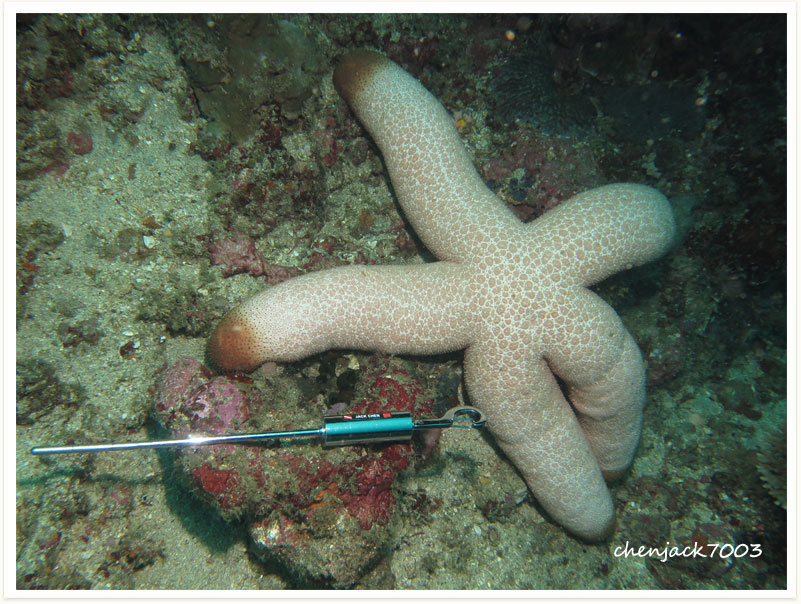
 Underwater Photography
Underwater PhotographyThromidia catalai is a sea star species. It was first described by Pope and Ross Robert Mackerras Rowe circa 1977. Thromidia catalai belongs to the genus Thromidia in the family Mithrodiidae.

Pentaceraster alveolatus is a starfish from the Oreasteridae family.
The scientific name of the species was published in 1875 by Edmond Perrier.
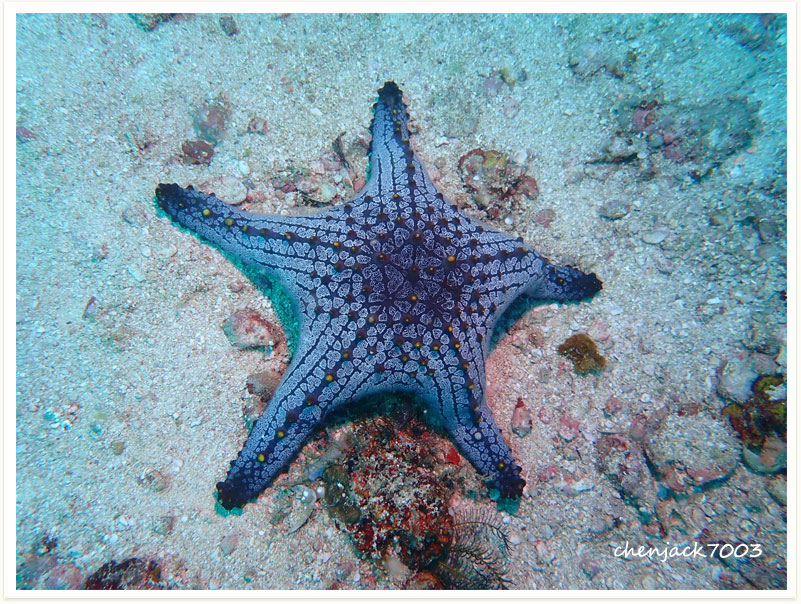
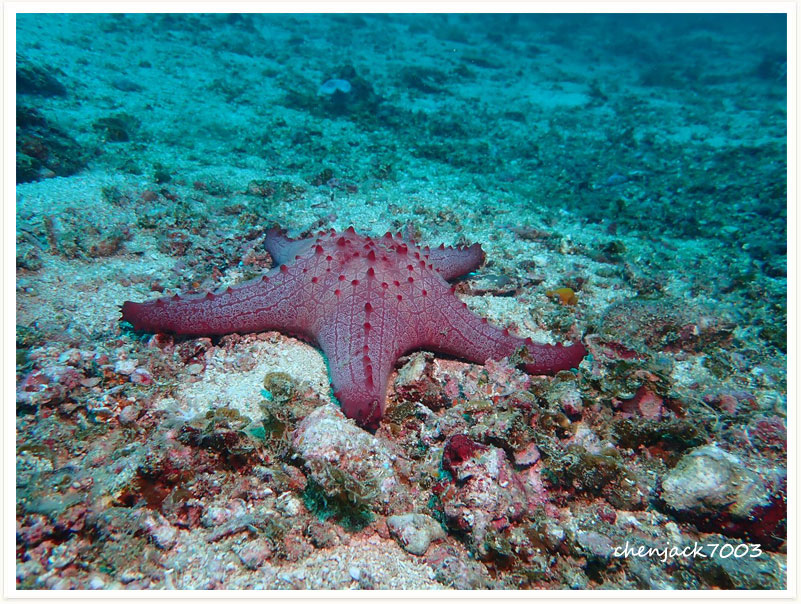
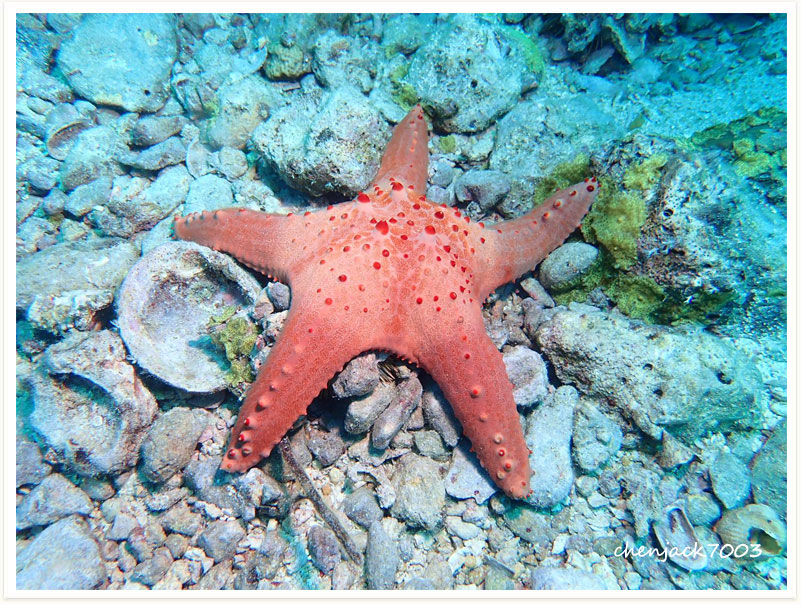
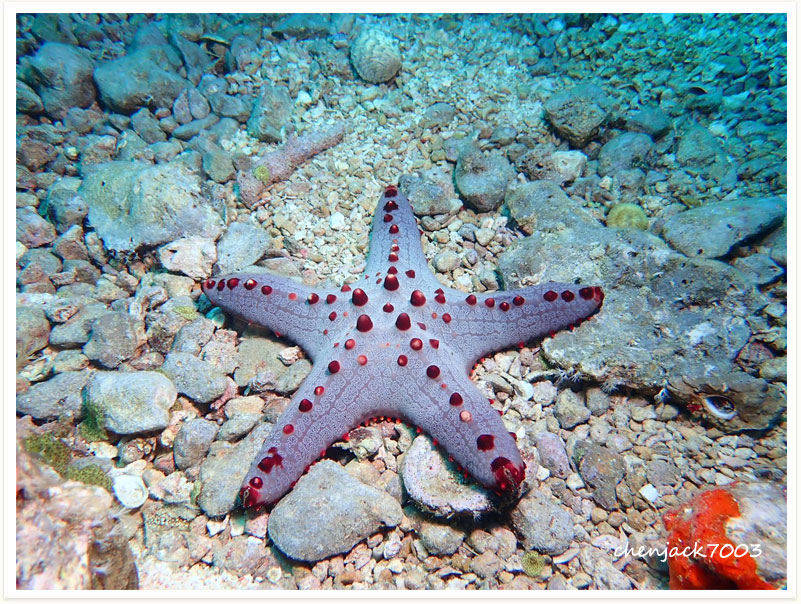
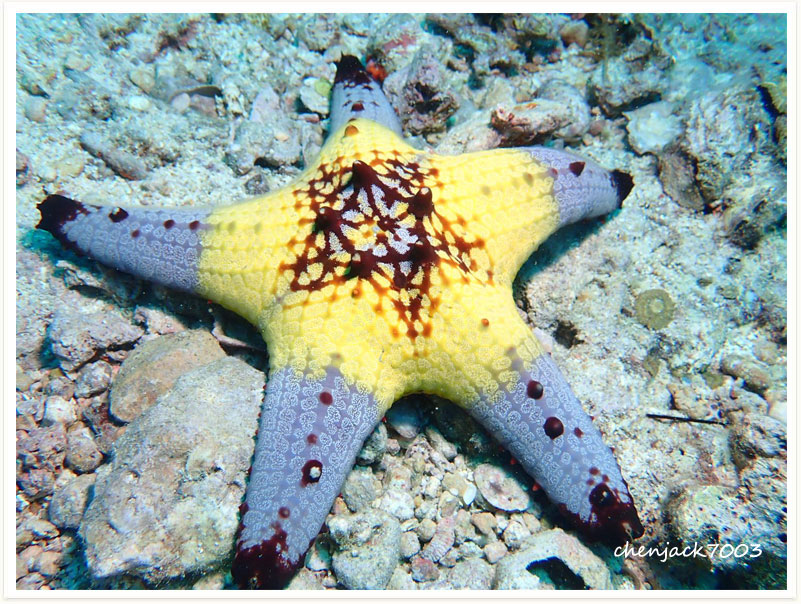
Brittle stars or ophiuroids are echinoderms in the class Ophiuroidea closely related to starfish. They crawl across the sea floor using their flexible arms for locomotion. The ophiuroids generally have five long, slender, whip-like arms which may reach up to 60 cm (24 in) in length on the largest specimens. They are also known as serpent stars; the New Latin class name Ophiuroidea is derived from the Ancient Greek ὄφις, meaning “serpent”.
Ophiothrix purpurea is a snake star in the Ophiotrichidae family.
The scientific name of the species was published in 1867 by Carl Eduard von Martens.
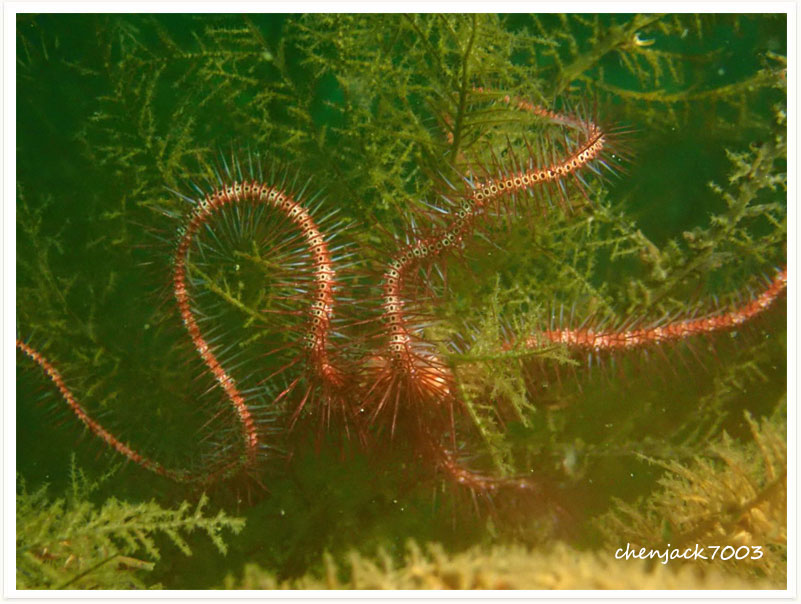
The variation (“polymorphism”, in this case, a “color morph”) most commonly found is pure, dark, or light blue, although observers find the aqua, purple, or orange variation throughout the ocean. These sea stars may grow up to 30 cm (11.8 in) in diameter, with rounded tips at each of the arms; some individuals may bear lighter or darker spots along each of their arms. Individual specimens are typically firm in texture, possessing the slightly tubular, elongated arms common to most of other members of the family Ophidiasteridae, and usually possessing short, yellowish tube feet. An inhabitant of coral reefs and sea grass beds, this species is relatively common and is typically found in sparse density throughout its range. Blue stars live subtidally, or sometimes intertidally, on fine (sand) or hard substrata and move relatively slowly (mean locomotion rate of 8.1 cm/min).
Fromia monilis can reach a diameter of about 30 centimetres (12 in). Tips of the arms and the disc center of this starfish are bright red, while the remaining parts are paler, forming large plates.
The appearance of this sea star can be highly variable (colors, plates, presence of plates on the central disc, armpits…), and its identification using picture can be difficult, as many other species (like Fromia nodosa) can have a very similar aspect.
Echinaster luzonicus is normally a six-armed starfish but is often rather asymmetrical in appearance because of its habit of shedding arms. It is somewhat variable in colouring, ranging from red to dark brown. Both these colour morphs were collected off Heron Island in the Great Barrier Reef, and individuals seemed able to change their colour from red to brown and back again, possibly as a response to the amount of ambient light they received.
Growing to a maximum diameter of 26 cm (10 in), Echinaster callosus has a small central disc and five slender cylindrical arms. The aboral (upper) surface is densely covered by warty protuberances. The colour of this starfish is variable, but may be orange, pink or violet, with the warts being a contrasting colour, usually white, pink, red or mauve. The white warts often occur in bands, particularly towards the tips of the arms. There are small yellowish-green retractable pedicellaria between the warts. The oral (under) surface of the starfish is white with white warts. There are ambulacral grooves on the underside of the arms along which food is passed by ciliary action. The tip of each arm bears an eyespot, as well as a bundle of suckers.
A mature C. novaeguineae is pentagonal to subglobose in shape with an inflated appearance and much-abbreviated arms. It can grow to a diameter of 30 cm (12 in). Rows of tube feet are on the underside, and it has a central mouth. The colour is very variable and includes a mottling with darker and lighter shades of fawn, brown, orange, yellow and green. The armoured body wall is made of calcareous ossicles which are supported internally by pillars which buttress the ambulacra. The armouring contains pits into which the tube feet can be retracted. The body cavity is filled with water. On the dorsal face, they can be covered with small conical tubercles, as well inside as outside of papular areas.
The Choriaster granulatus is a species of Asteroidea described by Christian Frederik Lütken in 1869. The Choriaster granulatus belongs to the genus Choriaster, and is known as the Oreasteridae. There are no subspecies listed.
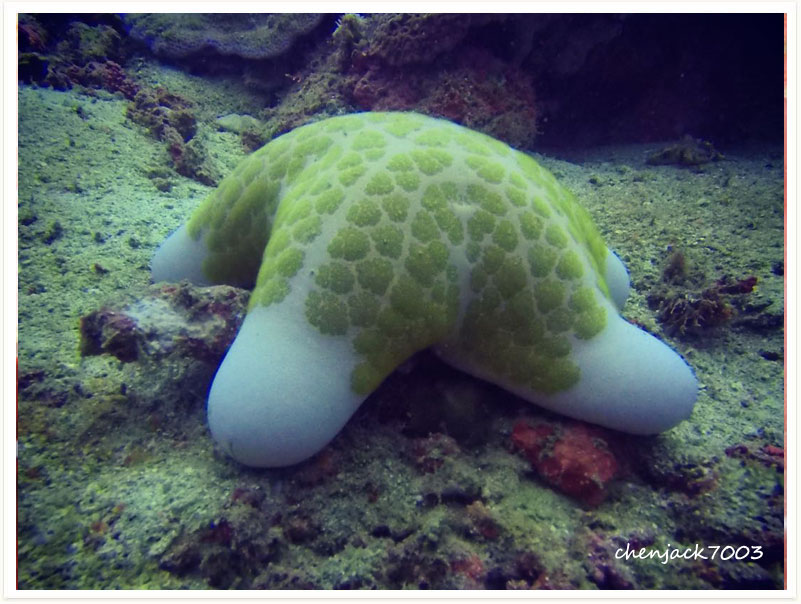
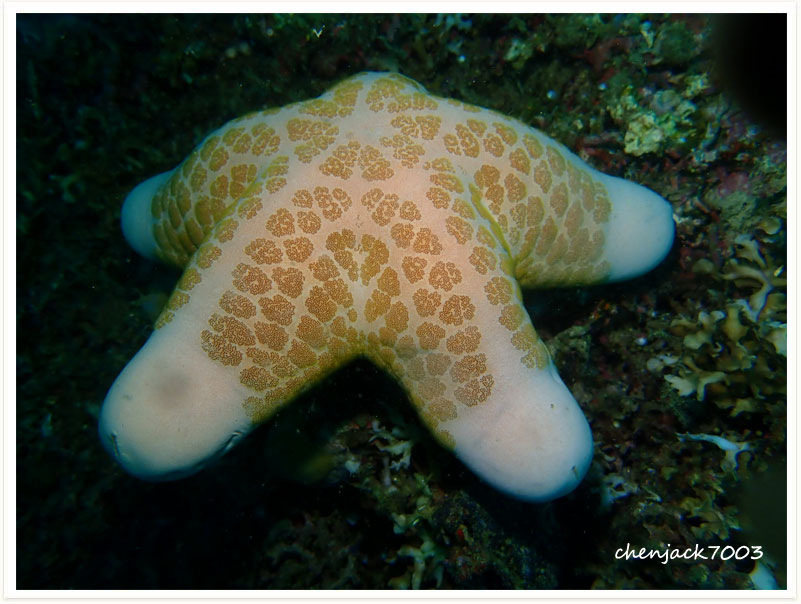
The body form of the crown-of-thorns starfish is fundamentally the same as that of a typical starfish, with a central disk and radiating arms. Its special traits, however, include being disc-shaped, multiple-armed, flexible, prehensile, and heavily spined, and having a large ratio of stomach surface to body mass. Its prehensile ability arises from the two rows of numerous tube feet that extend to the tip of each arm. In being multiple-armed, it has lost the five-fold symmetry (pentamerism) typical of starfish, although it begins its life cycle with this symmetry. The animal has true image forming vision.